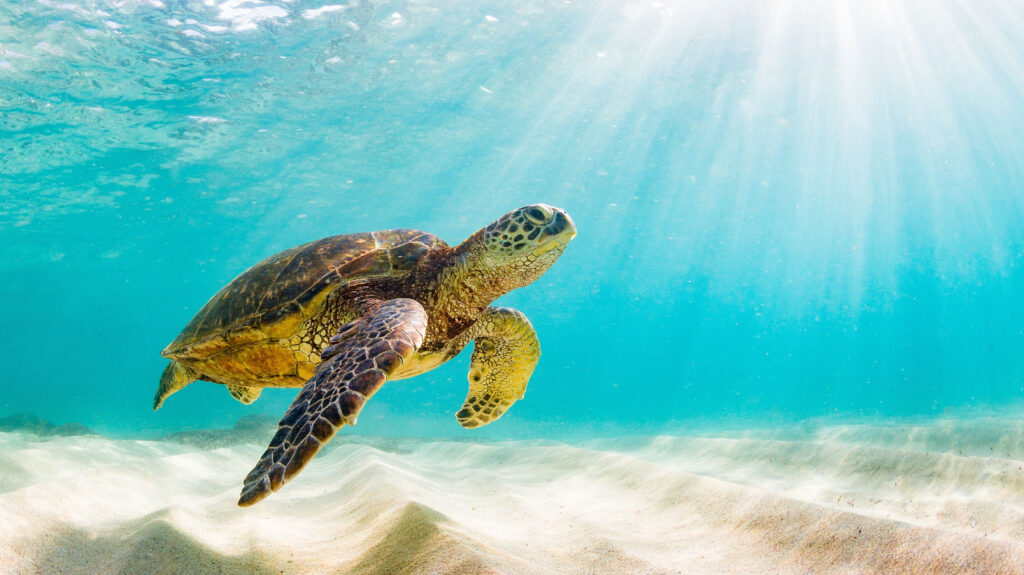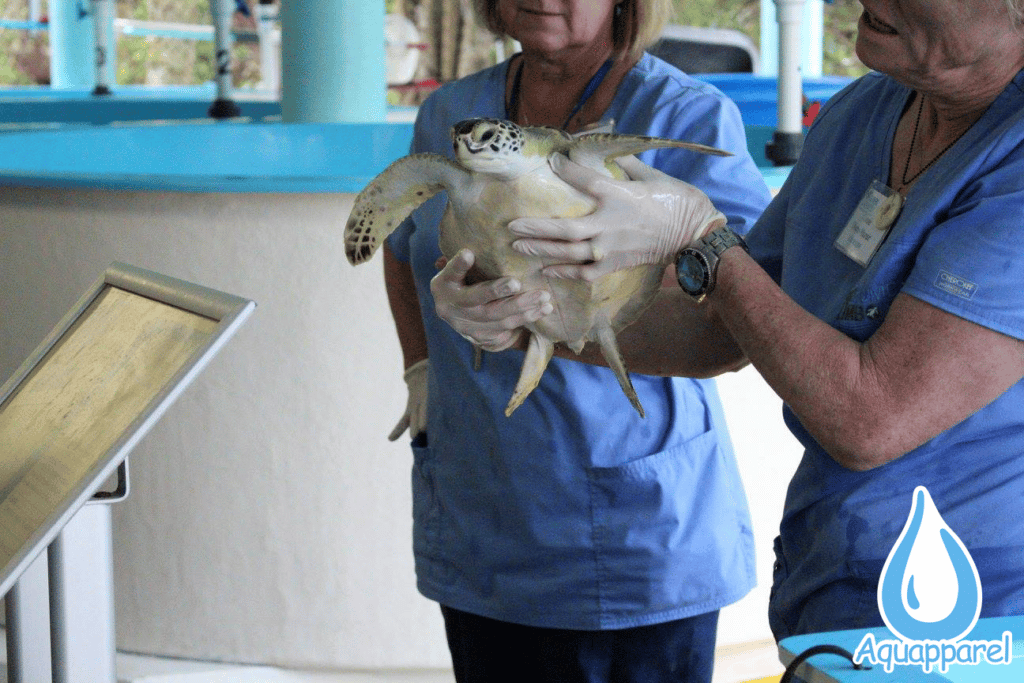Meet “Granny Smith”, a Green Sea Turtle who spent 5 months at the University of Florida Whitney Laboratory for Marine Bioscience Sea Turtle Hospital.
Also meet “Artichoke”, another Green Sea Turtle that spent 17 months at the same hospital.
Both sea turtles were treated for Fibropapillomatosis, which is a viral tumor-causing disease found in sea turtles.
According to NOAA Fisheries, Fibropapillomatosis was first reported in Florida in the late 1800s. In 1938, the disease appeared in scientific literature. Then, in the late 1980s the disease became better known on an International level as the disease became commonly reported to be found in Green Sea Turtles worldwide.

Green Sea Turtle
So what is this disease anyway? Well, for some reason it is known to affect Green Sea Turtles more than any other species of sea turtles and it can be debilitating. What starts as small benign tumors ends up being fairly large benign tumors which can grow on the sea turtle’s flippers, face, eyes and even on internal organs.
When a sea turtle is found in the wild with these tumors, authorities are called in to take the affected sea turtle into professional care. Once the sea turtle is evaluated by an expert, they will be treated by one of these types of surgeries in order to remove the tumor(s):
- Traditional scalpel surgery
- Electrocautery
- Cryosurgery
- CO2 lasers
The most common method used today is the CO2 laser surgery. This method is preferred as it is a much faster technique than the others which means less time for the sea turtle to be under anesthesia. This method also helps to control hemorrhaging since these tumors are known to bleed quite a bit when being removed. The laser also helps to minimize the incision size which means faster healing and less of a chance of the incision opening back up while it is healing.

Once the sea turtle is out of surgery and awake, then starts the rehabilitation process. Depending on how severe the surgery(ies) are determines the rehabilitation time. For example, Artichoke’s condition was so severe that she had to have one of their flippers amputated after one year of care. With the flipper removed, Artichoke has adapted and can now be released back into the ocean. Once the sea turtle is fully rehabilitated, the hospital will give them a final meal before sending them off from once they came. On July 14th, 2022 Granny Smith and Artichoke were released back into the wild.
These types of rescues, rehabilitations and releases happen quite often from sea turtle facilities all over the world. If you see a sick or injured sea turtle in the wild, you can report it to NOAA Fisheries here: Report a Stranded or Injured Marine Animal
You can also visit some facilities and donate to them in order to help their conservation efforts like this one which you can see a tour of below:
Every sea turtle that is rescued, rehabilitated and released is a conservation win! A big thank you to everyone who was involved!
For more good news from the conservation front, check out the Conservation Wins section of this website.
